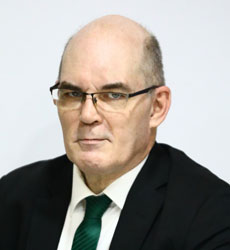YESTERDAY (Monday, March 20), as part of the Philippine Electric Power Industry Forum 2023 organized by the Independent Electricity Market Operator of the Philippines, a panel discussion was held on the topic, "Relaunching the Nuclear Energy Program in the Philippines." Since I seem to have developed a reputation for being the biggest public buzzkill for the Philippines' aspirations to acquire this particular unnecessary shiny thing — a reputation that, in the interest of full disclosure, I relish and will cheerfully continue to cultivate as much as I can — this forum session was obviously of great interest to me.
It would be of great interest to me under any circumstances, but in this instance is coincidentally happening on the heels of some alarmingly relevant news out of the US. Just last Thursday (March 16), the state government in Minnesota disclosed that it is dealing with the cleanup of 400,000 gallons (about 1.5 million liters, or about 1,500 metric tons) of radioactive water that has leaked from Xcel Energy's nuclear power plant located near Monticello, Minnesota, which is located on the bank of the upper Mississippi River just northwest of the Minneapolis-St. Paul metro area and the 3.7 million people who live there. The contaminated water contains tritium, a radioactive isotope of hydrogen that is a by-product of nuclear fission, and is a serious health risk if ingested, inhaled or absorbed through the skin. It has a number of benign uses in a weak, diluted form, mostly in lighting and radio-luminescent objects; in its concentrated form it is used as fuel for fusion reactors and thermonuclear weapons.
Continue reading with one of these options:
Ad-free access
P 80 per month
(billed annually at P 960)
- Unlimited ad-free access to website articles
- Limited offer: Subscribe today and get digital edition access for free (accessible with up to 3 devices)


